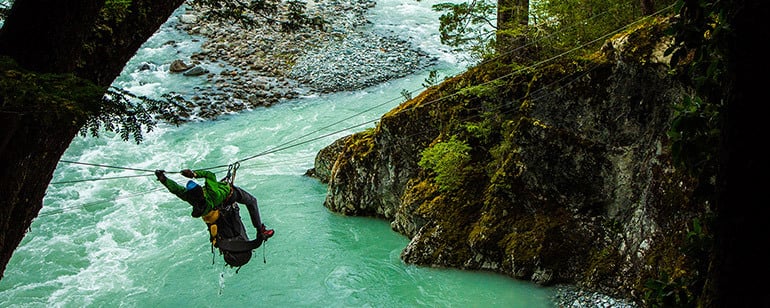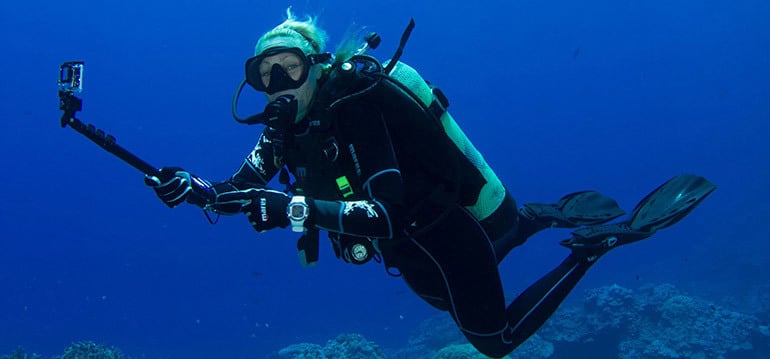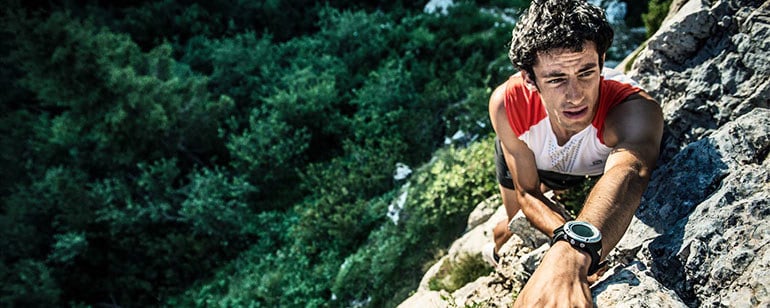

Suunto Blog

Why Emelie Forsberg loves to run
Emelie Forsberg has just taken a stunning victory in the Mont Blanc marathon 80km race. But it's not her epic win she's talking about – nor the fact it means she's now the 2014 Skyrunning Ultra champion.
Take a look at her Facebook page and you'll see it's her love of running and her passion for the mountains that comes across. “From my heart I can truly say I enjoyed every second of it,” she writes. “Pure skyrunning. J´adore! I love!”Before the race, we asked her exactly why she loves to run. Her answer is both refreshing and inspiring: “It's hard to describe it's so good,” she says. “You get a really good feeling in your legs. You feel so light – you're just flowing over the ground. Every uphill is super easy. Maybe you reach the summit and you just want to go further. Everything is connected. You feel like really wow, I could go on forever, or wow, what a great feeling, this is so beautiful.” “You can still get a great run even when it's also a rainy day and you have to really push yourself to go out the door,” she adds. “You're always super happy you got out there.”For Emelie, running is all about pleasure. “It is never difficult or hard!” she says, although she admits that it can get tough in a race. As for what she thinks about for all those hours on the trail, she says she tries to cultivate a state of 'mindfulness'. “If I have things that I think about, I make a list but when I have done that I'm less in my mind. With mindfulness you don't think about anything. You are just there – and nothing more.” Image ©DROZ PHOTO

Kilian's record ascent of Denali
When Kilian Jornet goes to the mountains on a personal project you can be sure the results will be interesting.
The mountain athlete does not disappoint. He's just returned from Denali, 6,194 m, the highest mountain in North America and sure enough, he's come back with a record – and an epic story to tell.
Avoiding the more popular West Rib route, Jornet headed up Rescue Gully on skis in his usual super fast style. By the time he returned exactly 11h and 48m later he'd smashed the record for the mountain's fastest ascent – by over five hours. The round trip involves an elevation gain of over 4,700 m and a distance of over 53 km.
What makes the ascent even more noteworthy is that conditions were bad for much of the ascent. Out of 16 days on the mountain, only three were good while blizzards, fog and low temperatures were the norm.
When Kilian set off on the summit bid, the thermometer was at -20ºC and the wind was gusting 40km/h.
“It has been a great adventure,” Kilian says. “Weather conditions were bad during much of the route. Yet, I managed to break the record, so I'm very satisfied. I took a different route rather than the usual one to avoid a stretch with fixed ropes because I wanted to stick to the values underlying the project – that is, attempting the record using as little equipment as possible, and without help.”
“I had to face two tough factors,” he adds. “On the one hand, the cold and the wind, which slowed me down throughout the route. On the other hand, the altitude, which affected me substantially from 5,000m.”
The summit was a special moment, he says, but not because of the view. “There was fog and I couldn't see a thing! But I thought ‘now my legs will finally stop hurting’!”
Denali, which is also known as McKinley, is one of the most forbidding peaks in the world. Although not as high as the Himalayan mountains, the Alaskan peak is notorious for its cold and brutal weather thanks to its proximity to the Arctic Circle. And with 4,000m of difference from base to summit, it features more vertical ascent than most mountains. Measured by topographic prominence it's the world's third most prominent peak after Everest and Aconcagua.
Image © Summits of My Life

The Lost Valley
Where does a journey begin and end? Off the grid in Patagonia the stakes are high. Consequence and weather are constant travel companions on the way to sending La Vuelta de los Condores (5.11 A2). Watch as Arc’teryx Athletes Will Stanhope, Paul McSorley, and Marc-Andre Leclerc, along with Matt van Beine, set off to climb in the remote reaches of northern Patagonia.

Dive like a Scuba Diver Girl
You’ve seen the diving videos of the Scuba Diver Girls and now you’re wondering how to get started with your own adventures. Margo Sanchez, president of the team, shares their secrets.
“It’s what everyone asks,” says Margo Sanchez when discussing the girls' many adventures. Along with her sister-in-law Stephanie Adamson, Sanchez formed what is perhaps the most-watched team of female divers in the world, with large followings on Facebook and beyond.
Whether it's advice for the newly certified diver about meeting more local dive buddies or suggestions for the veteran divers about their next exotic scuba trip, Sanchez suggests utilizing local resources.
Dive shops are always a good hook-up. “Look for your local Suunto dealer dive centers,” says Sanchez. “They're usually a great starting point for training, equipment as well as adventure and travel.” She adds that dive clubs are another fantastic resource for organized dive trips, group events and making new friends. Meetup.com is also a popular online resource used by many divers to find and join local dive clubs.
“Most importantly, local dive clubs, groups and shops are all good for one thing – meeting buddies who share a passion for the same sport and are excited to experience the next adventure,” says Sanchez.
Images © Brad Holland and Jennah Caster
Emelie Forsberg's illustrated 2014 goals!
There are some athletes who have printed spreadsheets and detailed training schedules mapped out months in advance. Then there are athletes like Emelie Forsberg, who's more a 'back-of-an-envelope' kind of a girl. She trains on feeling and goes for races for the experience as much as the competition.
Emelie's 2014 ambitions are suprisingly modest: “I just want to keep it together – that's an important goal,” she says.
“To realise your limits and what you can do and not push yourself too hard – that is always going to be my biggest goal. It's a big goal, maybe not that interesting but that's who I am.”
That's not to say she doesn't have some big plans for the year. But we'll let her artwork do the talking...

Race against the best
Maybe you fancy your chances against the world's best, or perhaps you'd just like to follow in his footsteps. Now's your chance. Here, we reveal Kilian Jornet's action-packed summer calendar. Catch him if you can...
The trail running season got off to an exciting start for the Suunto ambassador – second place at Transvulcania and a new record at Zegama. But from late May he focuses on his personal project Summits of My Life LINK and will journey to Alaska to attempt Mt McKinley (Denali). A few weeks there and Kilian be back in Europe in time for the Sky Running World Championships in late June in Chamonix, France. Kilian intends to participate in the vertical kilometer (VK) and in the marathon: “I guess I'll be a bit tired after McKinley, but I hope to be in good shape to run both races, as I am very familiar with the routes,” he says.
One of the most eagerly-awaited events will then take place in July. After three years trying for a place, Jornet has finally got into the 160km Hardrock 100, America's toughest ultra and one so popular that entry – even for elite athletes – is via a strict draw.
“Finally! It is a race I have always dreamed of taking part in,” says Kilian. “The route and the scenery in these mountains, to my mind the most beautiful in continental America, are breathtaking.”
After Hardrock come two races in July that Kilian knows well: the Dolomites Skyrace, where he'll do the VK and Sky Race (22km, 1,750 m) and the Giir di Mont (32km, 2,650 m).
In August he'll do the classic Sierre Zinal (31km, 2,200 m) and Kima Trophy (50km, 3,800m) and then return to the States for the Rutt Ultra (50km, 3,048 m). His last race will be the Limone Extreme (23.5 km, 2,000 m), near Lake Garda in Italy in October. But he'd also love to do the 170km Diagonale des Fous on Reunion Island again. “It's a race to be experienced, not only for the environment but also for its magnificent route amongst volcanoes,” he says.
If there's any energy left in the tank, Kilian plans to finish the year with a return to his personal project and attempt a record on Aconcagua, 6,960m, the highest mountain in the Americas. Go Kilian!










































































